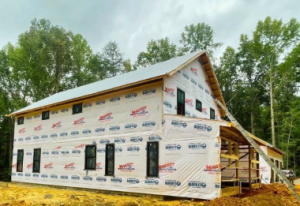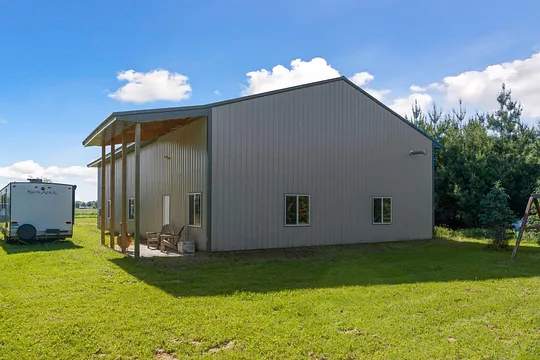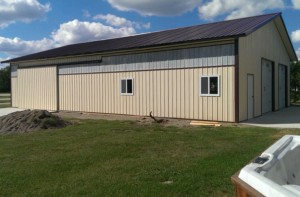In 1979 I took a position managing a prefabricated roof truss plant for a lumber yard in Oregon. I knew a lot about trusses, quite a bit about lumber, and not very much about windows.
Luckily, I had cohorts on the lumber side of things who did have some window knowledge, and were willing to share.
I had never installed anything other than aluminum frame windows, so vinyl was a whole new ballgame for me.
Years ago, vinyl windows were considered to be the “cheap” alternatives to aluminum. Early vinyl windows had problems with thermal expansion (the vinyl sash would expand or contract at a different rate from the glass and cause leaks) and also proved to be unstable in very hot environments.
 Modern vinyl windows are much more durable and dimensionally stable than their earlier cousins. Vinyl windows can be inexpensive, durable and remarkably energy efficient when designed properly to minimize thermal transfer. Look for vinyl window frames with heat-welded joints — they’re stiffer than mechanically joined vinyl frames and thus provide better resistance to temperature stresses. Interior webs also strengthen the frame and improve its thermal performance.
Modern vinyl windows are much more durable and dimensionally stable than their earlier cousins. Vinyl windows can be inexpensive, durable and remarkably energy efficient when designed properly to minimize thermal transfer. Look for vinyl window frames with heat-welded joints — they’re stiffer than mechanically joined vinyl frames and thus provide better resistance to temperature stresses. Interior webs also strengthen the frame and improve its thermal performance.
Vinyl windows are made primarily from polyvinyl chloride (PVC). Modern PVC is stronger, insulates better and costs less than aluminum products. This material has many advantages, including being virtually maintenance-free. While vinyl can be painted, it is often available in white and various neutral colors which complement many building colors. Because the factory color goes all the way through the material, scratches and dings are nearly impossible to see. Consequently, a vinyl window or patio door can look nearly new for years.
The best paint for vinyl is water-based 100 percent acrylic paint, or urethane-modified acrylic paint. Avoid lower-cost latex paint. Acrylic paint remains very flexible. Vinyl can expand and contract significantly with temperature changes, and lower quality paint will crack and peel under the stress.
Avoid alkyd (oil-based) paints. Like low-quality latex, they are not supple and flexible enough to withstand the contraction and expansion of vinyl. Alkyd paint may be acceptable for rigid window and door trim, but is harder to work with and takes longer to dry than acrylic paint.
For extra insurance against peeling paint, use a paint conditioner. Not only are some formulated to help paint stick to hard-to-paint surfaces, the right paint conditioner will also make the paint flow better and provide a more uniform finish.
Vinyl is made of pigmented plastic and can get very hot in direct sunlight. This is why it is typically available only in lighter colors. Vinyl which comes from the factory in dark colors is formulated to be sturdier and more durable. The rule of thumb when painting exterior vinyl is to paint it no darker than the original color. White may be painted light pastel shades. Using a dark color on light vinyl can cause it to buckle and warp in direct sunlight.
If installing vinyl windows with either steel or vinyl siding, always order windows with “J Channel attached”. This integrates the trim for the window opening into the jamb, making for a much easier installation. Best of all…it’s weather tight.








